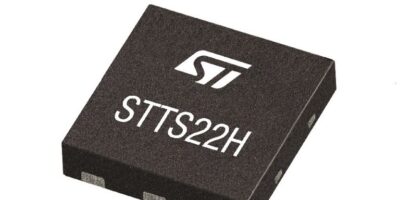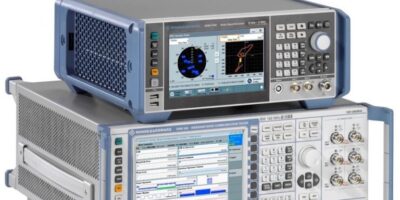Typical temperature reading accuracy of 0.25 degrees C, low operating and standby current, make the STMicroelectronics STTS22H temperature sensor particularly suitable for temperature and heat-flow monitoring in asset trackers, shipping-container loggers, HVAC systems, air humidifiers, refrigerators, building automation systems and smart consumer devices, says the company.
The STTS22H is I2C- and SMBus 3.0-compliant and supports flexible operating modes including configurable output data rate (ODR) down to 1Hz, a power-saving one-shot mode and an interrupt pin that supports SMBus alert response address (ARA). This allows the sensor, as an SMBus slave, to signal the application if a user-programmed upper or lower temperature threshold is exceeded. Programmable I²C/SMBus slave addresses allow up to two STTS22H sensors to share the same bus.
Power consumption is very low, drawing just 2.0 microA at 1Hz ODR and 1.75 microA during periodic one-shot measurements, to extend the running time of battery-powered devices. In standby mode with the serial port inactive, the STTS22H draws just 0.5 microA (typical). The 1.5 to 3.6V operating voltage range allows use with various power sources such as a small lithium cell.
The fast-acting sensor has a conversion time of 5milliseconds and provides 16-bit temperature data. The package’s metal slug minimises thermal resistance to ensure fast settling at the ambient temperature, says ST. The sensors are delivered factory-calibrated and maintain the 0.25 degrees C typical accuracy from -10 to 60 degrees C, eliminating any need for user calibration.
The STTS22H is in production now as a compact , low-profile 2.0 x 2.0 x 0.5mm, six-lead UDFN.







